#J.P. Morgan Library
Explore tagged Tumblr posts
Text
Celebrating Historical Black Librarians and Art Curators: Shaping Culture, History, and Society
March is Women’s History Month, a time to honor the remarkable women who’ve shaped history in profound ways. This month, we turn our attention to the incredible legacy of Black women who have worked tirelessly in the fields of librarianship and art curation. These women, often operating in the face of systemic racism and cultural exclusion, have preserved knowledge, brought cultural awareness to…

View On WordPress
#African American heritage#archival work#art curators of color#Belle de Costa Greene#Black excellence#Black librarians#Black women in history#Black women in the arts#Blu Moon Fiction#cultural preservation#hidden figures in history#historical art curation#J.P. Morgan Library#knowledge preservation#legacy building#library history#museum curators#passing the torch#What&039;s Your Story#Women’s History Month
3 notes
·
View notes
Text






THE (BLACK) WOMAN WHO MANAGED MORGAN’S MILLIONS
On a brisk December day in 1905, a young librarian stepped into the Manhattan office of America’s most powerful man. The two sized each other up. To her, the huge, hulking tycoon seemed whipsmart and curious about everything. To him, the petite woman seemed poised and precise. Conversation soon revealed a common love of old treasures — rare books, manuscripts, tapestries. So J.P. Morgan hired the librarian, never suspecting.
Belle da Costa Greene soon toured the salons of Europe. She posed for Matisse. She had affairs with a Norwegian count and an Italian duke. She dined with opera stars, tycoons, and royalty, charming all with her wit and intelligence. Yet she lived “behind the curtain of my mind,” because although she told everyone she was Portuguese, Belle da Costa Greene was black.
The art of “passing” casts a shadow on American history. No one knows how many light-skinned African-Americans, burdened by bigotry, crossed the color line and lived as whites. Some see betrayal, others courage, but in Belle da Costa Greene, (born Belle Marion Greener) we see a shooting star.
Her mother was a socialite among the noted black families of Washington, D.C. Her father was Harvard’s first black student, later a lawyer, professor, and diplomat. From her father, Belle learned to love history and its pearls. By the age of 12, she “wanted to work with rare books. I loved them even then, the sight of them, the wonderful feel of them, the romance and the thrill of them.”
But if her brilliant father suffered the scorn of Jim Crow, how could a black girl hope to rise? Belle found an answer when her parents separated. Changing their names, she and her mother entered Manhattan’s white society without a backward glance.
Belle soon became a librarian at Princeton where another librarian — J.P. Morgan’s nephew — noticed her. His uncle needed someone to manage his opulent new library. Belle got the job — $75 a week and a boss who terrified everyone he met.
By 1905, J.P. Morgan controlled half the nation’s railroads. He had masterminded mergers creating General Electric, U.S. Steel, and AT&T. But Morgan had studied art history, not finance. Nurturing a soft spot for “the finer things in life,” he soon had his librarian doing more than stenography.
Working together, Morgan and Greene created one of America’s great repositories for the artifacts of Western Civilization. With nerve and knowledge rivaling Morgan’s, Greene bought works by Raphael, Rembrandt, and Michelangelo. She paid small fortunes for Egyptian scrolls, and outbid the British Museum for ancient tablets and illuminated wonders. Meanwhile, behind the curtain of her secret, she wore plumed hats and fine gowns. “Just because I am a librarian,” she said, “doesn’t mean I have to dress like one.”
Morgan called her “the cleverest girl I know.” Greene admitted to having a “terrific crush” on the man she privately called “Big Chief.” But when asked about a romance, she said only, “We tried.” The odd couple never was a couple, biographers attest. Other men, however, simply swooned.
Greene got “hipped up” on one lover after another, notably art critic Bernard Berenson. From his villa in Florence, Berenson carried on a lengthy affair with Greene, whom he found “miraculously responsive and most of all to the things I really care most about.”
Yet there were rumors about “Miss Greene, with her tanned complexion.” “A mulatto,” some gossiped, while others thought she might hail from Cuba. Portuguese, she insisted, and went back to her fabulous and secret life. By 1912, she was earning a quarter million a year.
J.P. Morgan died in 1913. Of his $3 billion, nearly half was in his art collection. Some went to the Met but the rest remained under the control of Belle da Costa Greene. For the next 35 years, as director of the Morgan Library, she worked to make the library “pre-eminent, especially for incunabula, manuscripts, bindings, and the classics.”
Belle da Costa Greene died in 1950. Only when Morgan biographers probed her past did they learn her secret. But by then, hailed as “the soul of the Morgan Library,” she was seen as a treasure herself. Rather than remember her solely as a black woman who “passed,” biographers marveled at the unlikely partnership. A common love of art, it seems, can transcend all others. Almost.
Once, she recalled, Morgan asked her if she would like him more “if he were thirty years younger. I said no, I’d leave the library — he would be too dangerous — which seemed to please him. And then he said he never wanted to be younger except when he was with me and thought of me. I don’t doubt he has said that to every woman he knows but I love him just the same.”
21 notes
·
View notes
Text
Mani Sapienti

Questo in foto è un ritratto dipinto dal sommo pittore El Greco nel 1571 e conservato al Museo di Capodimonte a Napoli. È il ritratto di Giulio Giorgio Clovio, non tanto famoso adesso come lo era a quel tempo, perchè era considerato uno dei più grandi miniaturisti, paragonato dal Vasari a Michelangelo. Nel ritratto Clovio mostra un manoscritto, un Libro delle Ore (cioè una raccolta di preghiere scelte dal committente per un uso personale), che gli fu commissionato dal Cardinale Alessandro Farnese (e il caso vuole che un famoso ritratto del religioso fatto da Tiziano sia a pochi metri da questo nello stupendo museo napoletano).
Quel libro è famoso come uno dei pinnacoli dell'arte manoscritta, in un momento dove la pratica stava scomparendo per l'introduzione della stampa a caratteri mobili, ed aveva pagine intere di miniature come queste

Il libro faceva parte della collezione del Re delle Due Sicilie, ma dopo l'Unit�� d'Italia la collezione in parte fu venduta. Nel 1898 fu acquistato da J.P. Morgan di New York per la cifra, spaventosa per l'epoca, di 112 mila dollari, e oggi fa parte della strepitosa collezione di manoscritti della Morgan Library di New York.
Questa è una delle storie legati a questi oggetti incredibili, i manoscritti, che Christopher De Hamel racconta in questo portentoso quanto voluminoso lavoro

Nel 2018 lessi un suo libro simile, e ne parlai qui con lo stesso entusiasmo che mi ha lasciato questo. All'epoca l'attenzione di De Hamel era sull'oggetto manoscritto, oggi invece è sulle figure che girano attorno all'oggetto: dagli abati, ai collezionisti, ai miniaturisti, ai falsari, agli agenti letterari del 1500 o del secolo scorso, agli studiosi che osservandoli inventarono la paleografia o la moderna scienza della biblioteconomia, ai bibliotecari stessi. Dodici figure che spesso sono legate materialmente ad un manoscritto, dato che nel corso di centinaia di anni le loro mani li hanno sfogliati in periodi differenti, passando di mano come un gioiello, un'eredità fondiaria, un feudo. È un grande lavoro di riconoscimento del legame unico e a questo punto naturale tra l'arte, il lavoro per farla e il suo valore, inteso in termini economici, di prestigio sociale, di puro piacere personale. È anche una storia di conoscenza, di studio, di motivazioni, una storia di personaggi che avevano fini molto più ampli del possesso di un oggetto, e volevano dare impulsi più profondi alla creazione di identità sociali e culturali, alla creazione di un patrimonio condiviso, ad un lascito di conoscenza e bellezza che oltre la testimonianza del proprio successo volesse essere un momento di riflessione sulle capacità dell'uomo nel suo senso migliore.
Secondo De Hamel, la quantità di manoscritti che è arrivata fino a noi è sorprendentemente alta: oltre un milione di esemplari. E ho scoperto che solo una esigua parte ha un elevato valore economico: per la quasi totalità hanno valore storico-documentale. E per definizione sono tutti diversi tra loro anche quando trattano dello stesso argomento. E mi è sembrata una stupenda coincidenza che mentre leggevo queste pagine sono stati scoperti una nuova versione de Le Suite Vulgate du Merlin e addirittura una nuova copia della Magna Carta di Edoardo I del 1300 scoperta per caso da David Carpenter, professore di Storia medievale al King’s College di Londra: stava osservando alcune immagini digitalizzate della biblioteca della Harvard Law School durante le ricerche per scrivere un libro quando un file catalogato come “HLS MS 172” catturò la sua attenzione: quella che fu acquistata come copia per poche decine di sterline nel 1942 è una originale del 1300, dal valore storico ed economico inestimabile.
Leggendo queste storie, ho sempre pensato alla abilità di questi maestri, al processo intenso ed elaborato per la preparazione di un manoscritto (dalla produzione della carta o pergamena, la scrittura, la decorazione, la rilegatura, la conservazione tra l'altro tutte cose che ancora adesso si fanno a mano), alla potenza che già allora rappresentavano. Ne lascio qui due testimonianze, tra le più belle: una di Simon Bening di Bruges (databile 1522-15213) e una celeberrima dei Fratelli Limbourg dal Libro d'ore del Duca di Berry (XV secolo).


12 notes
·
View notes
Text

... endless amount of knowledge ...
The Library of the University Club of New York, USA
Founded in 1890, it is a private social club located in Midtown Manhattan. Notable founding members include J.P. Morgan, John D. Rockefeller, Theodore Roosevelt, and Mark Twain.
#endless amount of knowledge#library of the university club of new york#new york university#new york#nyc#manhattan#library#libraries around the world#libraries of the world
13 notes
·
View notes
Text
Blackcrowing's Master Reading List

I have created a dropbox with pdfs I have gathered over the years, I have done my best to only allow access to documents which I found openly available through sites like JSTOR, Archive.org, or other educational resources with papers available for download.
That being said I ALSO recommend (I obviously have not read all of these but they are either in my library or I intend to add them)
📚 Celtic/Irish Pagan Books
The Morrighan: Meeting the Great Queens, Morgan Daimler
Raven Goddess: Going Deeper with the Morríghan, Morgan Daimler
Irish Paganism: Reconstructing Irish Polytheism, Morgan Daimler
Ogam: Weaving Word Wisdom, Erynn Rowan Laurie
Celtic Cosmology and the Otherworld: Myths, Orgins, Sovereignty and Liminality, Sharon Paice MacLeod
Celtic Myth and Religion, Sharon Paice MacLeod
A Guide to Ogam Divination, Marissa Hegarty (I'm leaving this on my list because I want to support independent authors. However, if you have already read Weaving Word Wisdom this book is unlikely to further enhance your understanding of ogam in a divination capacity)
The Book of the Great Queen, Morpheus Ravenna
Litany of The Morrígna, Morpheus Ravenna
Celtic Visions, Caitlín Matthews
Harp, Club & Calderon, Edited by Lora O'Brien and Morpheus Ravenna
Celtic Cosmology: Perspectives from Ireland and Scotland, Edited by Jacqueline Borsje and others
Polytheistic Monasticism: Voices from Pagan Cloisters, Edited by Janet Munin
📚 Celtic/Irish Academic Books
Early Medieval Ireland 400-1200, Dáibhí Ó Cróinín
The Sacred Isle, Dáithi Ó hÓgáin
The Ancient Celts, Berry Cunliffe
The Celtic World, Berry Cunliffe
Irish Kingship and Seccession, Bart Jaski
Early Irish Farming, Fergus Kelly
Studies in Irish Mythology, Grigory Bondarnko
Prehistoric Archaeology of Ireland, John Waddell
Archeology and Celtic Myth, John Waddell
Understanding the Celtic Religion: Revisiting the Past, Edited by Katja Ritari and Alexandria Bergholm
A Guide to Ogam, Damian McManus
Cesar's Druids: an Ancient Priesthood, Miranda Aldhouse Green
Animals in Celtic Life and Myth, Miranda Aldhouse Green
The Gods of the Celts, Miranda Green
The Celtic World, Edited by Miranda J Green
Myth and History in Celtic and Scandinavian Tradition, Edited by Emily Lyle
Ancient Irish Tales, Edited by Tom P Cross and Clark Haris Slover
Cattle Lords and Clansmen, Nerys Patterson
Celtic Heritage, Alwyn and Brinley Rees
Ireland's Immortals, Mark Williams
The Origins of the Irish, J. P. Mallory
In Search of the Irish Dreamtime, J. P. Mallory
The Táin, Thomas Kinsella translation
The Sutton Hoo Sceptre and the Roots of Celtic Kingship Theory, Michael J. Enright
Celtic Warfare, Giola Canestrelli
Irish Customs and Beliefs, Kevin Danaher
Pagan Celtic Ireland, Barry Raftery
Cult of the Sacred Center, Proinsais Mac Cana
Mythical Ireland: New Light on the Ancient Past, Anthony Murphy
Early Medieval Ireland AD 400-1100, Aidan O'Sullivan and others
The Festival of Lughnasa, Máire MacNeill
Curse of Ireland, Cecily Gillgan
📚 Indo-European Books (Mostly Academic and linguistic)
Dictionary of Indo-European Concepts and Society, Emily Benveniste
A Dictionary of Selected Synonyms in the Principle Indo-European Languages, Carl Darling Buck
The Horse, the Wheel and Language, David W. Anthony
Comparative Indo-European Linguistics, Robert S.P. Beekes
In Search of the Indo-Europeans, J.P. Mallory
Indo-European Mythology and Religion, Alexander Jacob
Some of these books had low print runs and therefore can be difficult to find and very expensive... SOME of those books can be found online with the help of friends... 🏴☠️
library genesis might be a great place to start... hint hint...
My kofi
#books#book#resource#blackcrowing#pagan#paganism#irish mythology#celtic#irish paganism#irish polytheism#celtic paganism#celtic polytheism#celtic mythology#indo european#indo european mythology#historical linguistics#paganblr#masterlist#irish reconstructionism#irish reconstructionist#celtic reconstructionist#celtic reconstructionism#masterpost
136 notes
·
View notes
Text

Andrew Carnegie's journey from humble beginnings to one of the richest men in history is a tale of ambition, hard work, and generosity. Starting as a bobbin boy making just $1.20 per week in 1848, Carnegie climbed the ranks of industry, eventually founding Carnegie Steel Company, which became the largest steel empire in America.
By 1901, he sold his steel business to J.P. Morgan for $480 million, an enormous fortune at the time. But instead of keeping his wealth, he donated around 90% of it, funding libraries, education, and scientific advancements. Carnegie established over 2,500 public libraries, believing that knowledge and learning were the keys to progress and opportunity.
3 notes
·
View notes
Text

"Portrait of Mrs. J.P. Morgan Jr." (nee Jane Norton Grew) by John Singer Sargent
(c.1906)
Oil on canvas
The Morgan Library & Museum
Contrary to the artist's inscribed date of 1906, Mrs Morgan apparently sat for Sargen between 1904 and 1905 when she was 36 years old.
Sargent painted her portrait in 1904-05 in London, where the Morgans have lived since 1898. Jesse Morgan noted in her scrapbook that Sargent "thinks it the best work he has done this year. He arranged a mirror so that I could watch him paint. It was thrilling to see him work."
She wears a Jean-Philippe Worth ball gown.
Source: The Morgan Library & Museum
6 notes
·
View notes
Text
ANDREW CARNEGIE
As Americans, this is a name we have all come to recognize. Carnegie was an incredibly successful industrialist and philanthropist in the late 19th century and early 20th century.
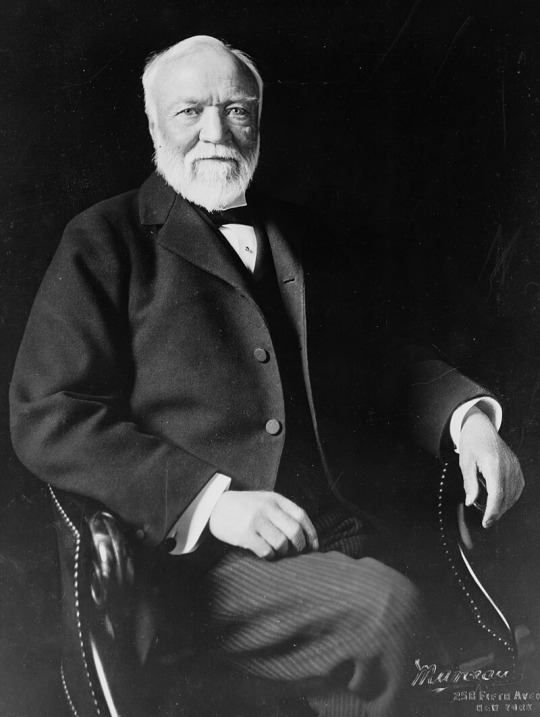
He was born in Dunfermline, Scotland but his family moved to Pittsburgh, Pennsylvania when he was a child. He built Pittsburgh's Carnegie Steel Company which he sold to J.P. Morgan for a whopping $300 mill ($10 bill today).
His biggest contributions came after he sold his steel company. He believed that the rich had a duty to improve society so he focused his efforts on building local libraries, world peace, education, and scientific research. He are some of the buildings he funded or had built:
Carnegie Hall

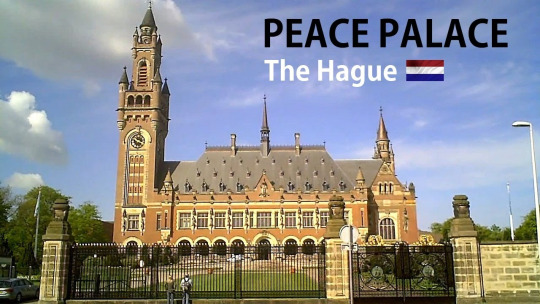
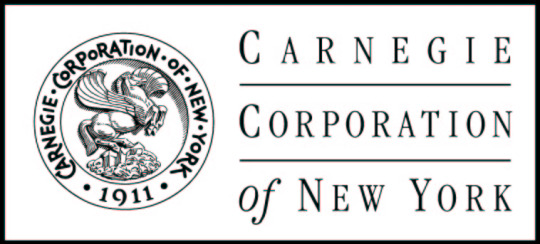
Carnegie Institute of Science
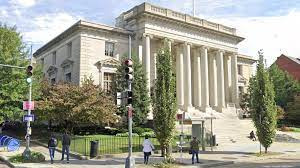
Carnegie Mellon University
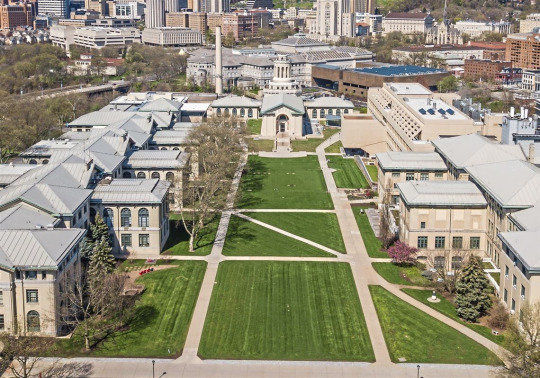
Carnegie Museums

Carnegie was fascinated with dinosaurs. He actually funded the digs at Dinosaur National Monument (yes, that place exists thanks to him).

He was especially proud of Dippy, the first Diplodocus ever discovered.
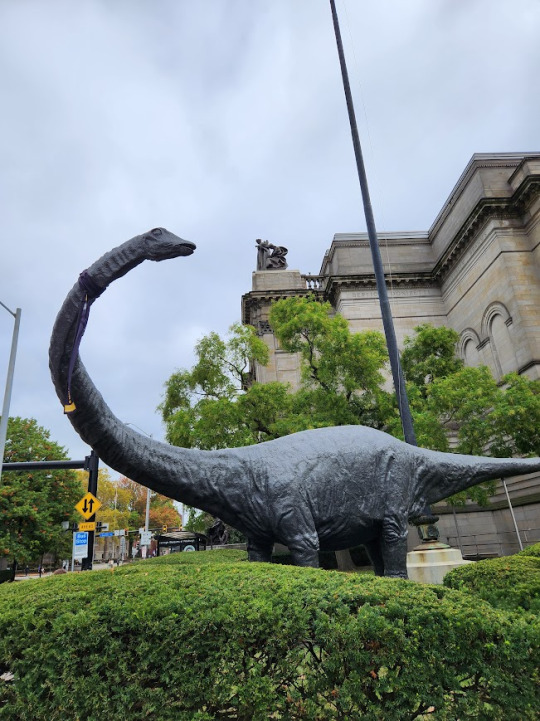
The species name was actually named for him (Diplodocus carnegii) and the full skeleton stands in Dinosaur Hall today at the Carnegie Museum of Natural History. Carngie had several copies of the skeleton made and shipped to other museums in South America and Europe.
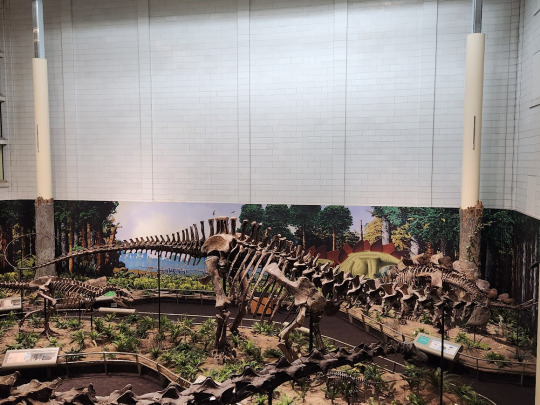
Carnegie donated over $250,000 to paleontology for "collecting, preparing and studying dinosaur and other vertebrate fossils." If only we had as generous a wealthy benefactor for our site. That is the dream.
While Diplodocus was the most famous dinosaur connected to Carnegie, there was one other fairly famous dinosaur connected to him. You've probably heard of this guy:
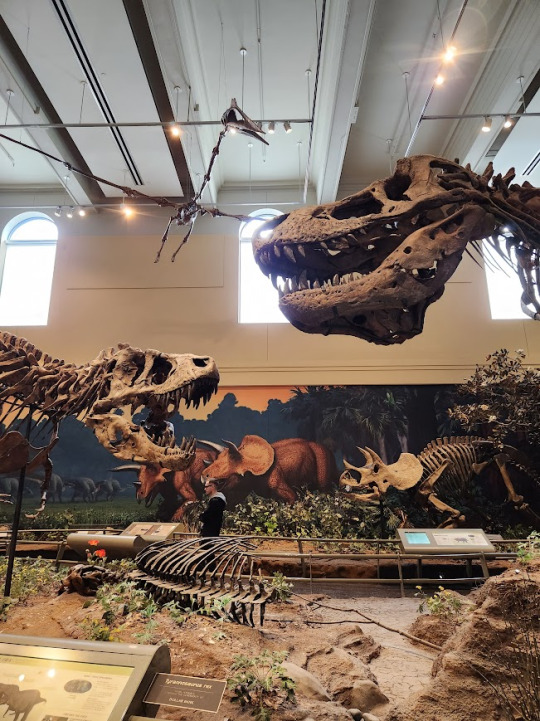
The American Museum of Natural History in New York sold the skeleton to Carnegie during WWII when they thought in would be bombed by the Germans. The skeleton has stood in Carnegie's museum ever since.
#paleontology#dinosaur#fossils#fun facts#dinosaur national monument#andrew carnegie#history#pittsburgh pa#carnegie museum of natural history
12 notes
·
View notes
Text

Belle da Costa Greene (November 26, 1879 – May 10, 1950) was one of the most prominent librarians in American history. She was born Belle Marion Greener to African American parents Richard Theodore Greener and Genevieve Ida Fleet Greener in DC. Her mother changed her last name to Van Vliet and her children changed their names to Greene. She dropped her given middle name, changed it to da Costa, and began claiming a Portuguese background to explain her light, dusky complexion to escape the deep racism and segregation of the era.
She worked at the Princeton University Library. The assistant librarian was Junius Spencer Morgan, nephew of J. P. Morgan. Morgan at the time was building a library in New York City and was looking for someone to help him cultivate his growing collections. She met with Morgan in 1905 and was hired at $75 a week.
She worked as Morgan’s stenographer and librarian. She was trusted with millions of dollars to purchase books, manuscripts, and art items. She toured Paris, Milan, Munich, and Tunis as well as other locations in search of rare works. She outbid British museums for Egyptian manuscripts and scrolls, ancient tablets, and works by Raphael and Rembrandt.
She never married but admitted to affairs with Morgan, a Norwegian Count, a British Duke, and a decade-long affair with art critic Bernard Berenson. They traveled together, in search of rare works, and shared a love of Islamic manuscripts and miniatures. Her passion for fashion played out in her attire of wide-brimmed, plumed hats and fine gowns she wore daily.
By 1912, she was earning a quarter of a million dollars a year. When J.P. Morgan died in 1913, he left her $50,000 in his will. She was appointed the inaugural director of the Pierpont Morgan Library. She was elected a Fellow of the Medieval Academy of America, making her the second woman and the first known person of color to be so honored. She retired in 1948.
She burned all of her papers to further obscure her heritage and lineage. Heidi Ardizzone wrote her biography based on numerous letters sent to Berenson over the years. #africanhistory365 #africanexcellence
2 notes
·
View notes
Text
#article#smithsonian#books and libraries#library#libraries#20th century#new york#black history#women's history#history
5 notes
·
View notes
Text
I went to the Morgan Library yesterday, where one of the main galleries was an expedition called Medieval Money. With banger plaques like “Will Money Damn Your Soul?” And “Your Money or Your Life?”, it featured the ethical and theological debate at the time of early capitalism on the ethics of earning and keeping large amounts of money when the Bible clearly says not to do that. It had illuminated manuscripts with illustrations of parables condemning wealth contrasted with early money, scales and bishop pardons to the wealthy who donated to churches.
One, I really wish the majority of American Christians kept the same energy they have towards gay and trans people to the wealthy who are actually condemned in the Bible.
Two, I want to meet the smug curator who decided to create that exhibit out of J.P. Morgan’s private collection and feature it in his museum. Loved the irony.
4 notes
·
View notes
Text
Bleu's Reviews: The Personal Librarian
My journey with The Personal Librarian began with a serendipitous visit to the Morgan Library for my birthday. My friend Tamaya and I stumbled upon the 100-year celebration of the library’s founding and uncovered the remarkable story of the woman who brought it to the height of its prominence: Belle de Costa Greene.But who was Belle de Costa Greene? The exhibit and short film we viewed revealed…

View On WordPress
#African American history#art history#Belle de Costa Greene#Black excellence#Black women pioneers#Blu Moon Reads#Book Recommendations#Book Review#Historical Fiction#identity and legacy#illuminated manuscripts#J.P. Morgan Library#literary legacy#Marie Benedict#must-read books#passing as white#The Personal Librarian#Victoria Christopher Murray#women in history
0 notes
Text

... endless amount of knowledge ...
The Library of the University Club of New York, USA
Founded in 1890, it is a private social club located in Midtown Manhattan. Notable founding members include J.P. Morgan, John D. Rockefeller, Theodore Roosevelt, and Mark Twain
#endless amount of knowledge#library#libraries#books & libraries#library of the university club#new york#new york city#university of new york
9 notes
·
View notes
Text

Belle da Costa Greene, the personal librarian of J.P. Morgan.George Grantham Bain Collection/Library of Congress
The Story Of J.P. Morgan's 'Personal Librarian' — And Why She Chose To Pass As White
0 notes
Text
Iconic Investment Banking Deals That Shaped Global Industries

The art of investment banking has been right at the core of some of the most transformational deals in world business history. Whether it was through some high-profile acquisition or through ground-breaking mergers, these deals not only made their marks upon an industry but also portrayed just how vital a part investment bankers were in the overall economy. Thus, for someone aspiring to join in such mega deals, going through Investment Banking Courses is definitely the best beginning. Let's walk through some of the most known investment banking deals of all time, along with what has stayed over time.
J.P. Morgan and the Formation of U.S. Steel (1901)
The Deal
Among the very earliest and biggest in investment banking history, J.P. Morgan helped bring several steel companies together to create U.S. Steel-the first billion-dollar company in the world.
Impact
This deal not only cemented J.P. Morgan's reputation as a financial powerhouse but also marked the beginning of large-scale corporate mergers in the United States.
Why It Matters:
It showcased the power of investment banking in consolidating industries and creating economic giants.
Barclays' Acquisition of Lehman Brothers (2008)
The Deal:
During the 2008 financial crisis, Barclays acquired the North American operations of Lehman Brothers for $1.75 billion after Lehman's bankruptcy.
Impact:
This acquisition enabled Barclays to increase its presence in the U.S. and acquire the talent and assets of Lehman, making it a global investment banking leader.
Why It Matters:
It pointed out the involvement of investment banks in the midst of financial crises and how to capitalize on it.
Goldman Sachs' IPO (1999)
The Deal:
Goldman Sachs floated its stock in 1999, raising $3.66 billion in one of the biggest IPOs an investment bank had ever undertaken.
Impact:
It represented a turning point for Goldman Sachs in its evolution from a private partnership to a public company that, in turn, affected the bank's business and business model operations.
Why It Matters:
It is an indication that investment banks do indeed change as their markets do; they change along with it, too.
Amazon Takes Over Whole Foods (2017)
The Deal
Amazon paid $13.7 billion for Whole Foods and entered the world of brick-and-mortar grocery.
This deal shook the retail and grocery industries, with Amazon demonstrating the potential of technology to change old business models.
Why It Matters:
Investment banks have played a very crucial role in structuring and executing this deal, and therefore it has marked the importance of investment banks in tech-driven acquisitions.
Disney's Acquisition of 21st Century Fox (2019)
The Deal:
Disney bought 21st Century Fox for $71.3 billion, one of the biggest deals in media history.
Impact:
This deal made Disney the leading player in the entertainment industry, controlling big franchises and increasing its content library for services like Disney+.
Why It Matters:
The deal underlined the strategic role of investment bankers in facilitating mergers that redefine industries.
Facebook's Acquisition of Instagram (2012)
The Deal:
Facebook acquired Instagram for $1 billion, an acquisition that then seemed overpriced but actually turned out to be one of the most lucrative tech acquisitions.
Impact: Instagram became one of Facebook's major drivers of revenue; it helped significantly enhance the company's growth and success in social media.
Why It Matters: The deal above reflects how investment bankers can find and execute high-growth potential acquisition deals. Why Study Investment Banking?
These are the iconic deals that show how investment banking has shaped industries and economies. For those inspired by these transformative transactions, pursuing Investment Banking Courses can be a great source of knowledge and skills to help them excel in this dynamic field-from financial modeling to deal structuring, all of which is covered in the courses.
Conclusion
Investment banking has been instrumental in some of the most impactful deals in history - driving innovation, consolidation, and economic growth. Whether one is merely facilitating the creation of billion-dollar corporations or navigating potential financial crises, investment bankers are influential figures in the world economy. So, if interested in these stories, perhaps it's time to be part of that next big deal? Consider enrolling in investment banking courses to get started. Who knows? The next iconic deal may just have your name on it!
0 notes
Text
0 notes